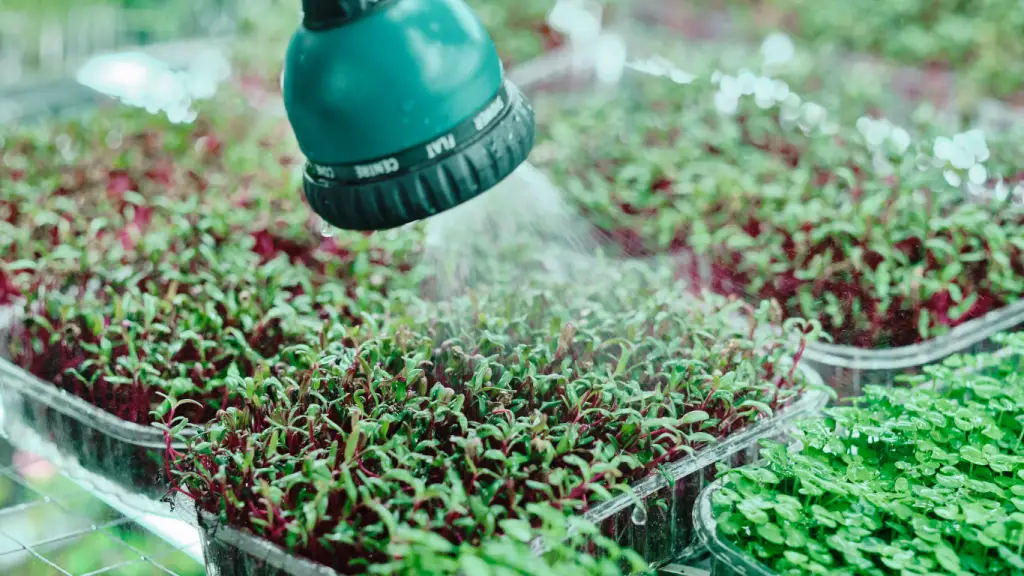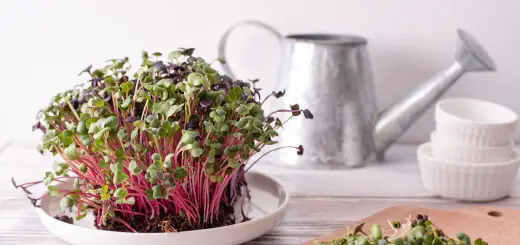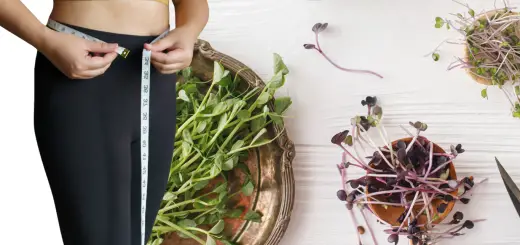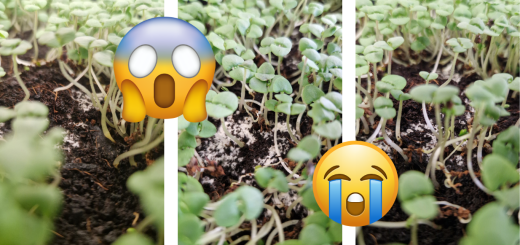How to Water Microgreens: Step-by-Step Guide & Tips
Hello everyone!
Today, we’re diving into a topic of vital importance when it comes to growing microgreens: watering. It’s so important because the way you water your microgreens will make the difference between a healthy crop and one with problems such as mold, fungus, or weak growth.
From our experience growing microgreens, we’ve learned that watering is extremely delicate, you need to find the perfect balance between keeping the moisture and avoiding excess water.
In previous articles, we’ve already shared some tips on how to water different species of microgreens, but in this article, we’ll go into detail on this subject.

What you need for proper watering
- Fine mist spray bottle: Ideal for moistening the surface without displacing freshly sown seeds.
- Fine-spout watering can: Perfect for bottom watering or more precise control in later stages.
- Growing trays: If you use two trays, you can water from below and avoid wetting the leaves too much.
- Filtered or rested water: This helps you avoid excess chlorine and mineral salts that could harm your plants.
Step-by-step guide to watering microgreens
- During sowing
After spreading the seeds, moisten the surface with a spray bottle. The goal is to soak the substrate without creating puddles. - Germination period
While the seeds are covered (the first 2–3 days), check the moisture once or twice a day. If the soil looks dry on the surface, mist it lightly. - After uncovering
Once the sprouts have emerged and are under light, increase monitoring. You have two options:
- Top watering: Use a fine spray, avoiding hitting the stems too hard.
- Bottom watering (capillary method): Place water in the lower tray and let the roots absorb what they need for 15–20 minutes, then remove any excess.
- Frequency
Usually, watering once a day is enough. In very dry climates or under strong lights, they might need a second watering. - Signs of overwatering or underwatering
- Overwatering: Soft stems, yellowing leaves, presence of mold.
- Underwatering: Drooping leaves, slow growth, dry and hard substrate.
Helpful tips
- It’s always better to underwater slightly than to overwater. You can fix insufficient watering, but too much water can ruin the whole tray.
- If watering from above, do it gently to avoid toppling the sprouts.
- If using bottom watering, change the water in the lower tray frequently to prevent bad odors or bacteria.
In summary, watering microgreens isn’t complicated, but it does require attention and careful observation. If you master this step, you’ve got almost everything covered.
We hope you enjoyed, and most importantly, found value, in this article. See you in the next one! The microgreens adventure continues.







